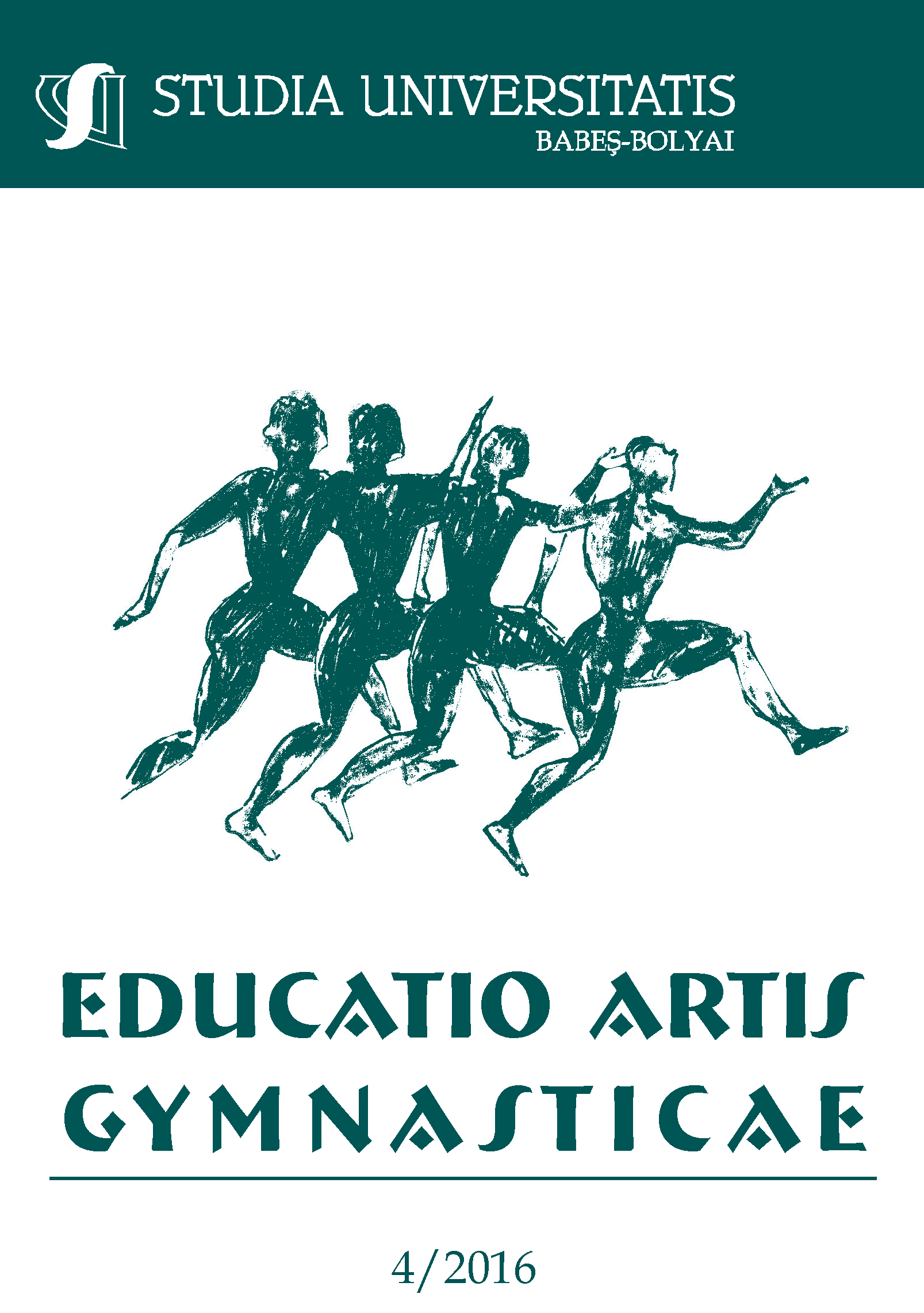OBESITY – THE CHRONIC DISEASE OF THE 21ˢᵗ CENTURY
Keywords:
obesity, disease control, genetic factors, sport, children, health.Abstract
Obesity is the scourge of humanity. Even if we aspire to a standard of living increasingly higher and more comfortable, this implies a risk to humanity, risking that through ignorance, to lead the human race from destruction. More than half the world’s population is overweight and the rate increases from year to year. The number of deaths in one year amounts to 3.4 million people. Those who remain with disabilities rises to 3.9%. Recovery costs are huge. The work aims to present how danger is the obesity and ways to prevent it. Attaining those objectives is a close collaboration between medical sciences, sport sciences, sociology, chemistry sciences. Even if exercise cannot always solve stopping and controlling obesity, it is still the least expensive of known treatments.
Obezitatea – boala cronică a secolului XXI. Obezitatea reprezintă flagelul omenirii. Chiar dacă tindem spre un nivel de viață din ce în ce mai ridicat și mai confortabil, aceasta presupune un risc pentru umanitate, riscând ca prin ignoranță, să ducem rasa umană la distrugere. Mai bine de jumătate din populația lumii este supraponderală, iar rata crește de la an la an. Numărul deceselor într-un singur an se ridică la 3,4 milioane de oameni. Cei care rămân cu handicap se ridică la 3,9%. Costurile recuperării sunt uriașe. Lucrarea dorește să prezinte pericol ce îl reprezintă obezitatea și mijloacele de prevenire a acesteia. Atingerea obiectivelor este o colaborare strânsă între științele medicinei, științele sportului, ale sociologiei, ale științelor chimiei. Chiar dacă nu întotdeauna exercițiul fizic poate rezolva stoparea și ținerea sub control a obezității, este, totuși, cea mai puțin costisitoare dintre tratamentele cunoscute.
Cuvinte-cheie: obezitate, controlul bolii, factori genetici, sport, copii, sănatate.
References
Antl-Weiser, Walpurga (2012) – The anthropomorphic figurines from Willendorf. Niederösterreichischen Landesmuseum. Retrived from:(http://www.zobodat.at/pdf/WM_19_0019-0030.pdf)
Cynthia L. Ogden, PhD; Margaret D. Carroll, MSPH; Brian K. Kit, MD, MPH; et al. (2014). Prevalence of Childhood and Adult Obesity in the United States, 2011-2012. AMA. 2014; 311(8):806-814. doi:10.1001/jama.2014.732
European Commission, Directorate General Health and Consumers, Directorate C “Health and Risk Assessment” (2010 July). Physical Activity and Health. Annual Report, Brussels, Belgium, website: http://ec.europa.eu/health/sites/health/files/nutrition_physical_activity/docs/evaluation_frep_en.pdf
Erickson, C. 2004, Viața extravagantă a lui Henric al VIII-lea, Bucureşti: Editura Lider.
Dwivedi, Girish, Dwivedi, Shridhar (2007) – History of Medicine: Sushruta- The Clinician- Teacher par Excellence. Department of Medicine/Preventive Cardiology, University College of Medical Sciences and GTB Hospital, Shahdara.
Garabed, E. (2008). AdolpheQuetelet (1796–1874) - The Average Man and Indices of Obesity. Nephrology Dialysis Transplantation 23: 47-51, doi: 10.1093./ndt/gfm517
Fagan, B. M., Beck, Ch., (1996) - "Venus Figurines", The Oxford Companion to Archaeology, Oxford University Press.
Garland, R. (2009). Daily life of the ancient Greeks, Greenwood Press, 88 Post Road West, Westport.
Hippocrate; Grimm, JFC; Lilienhain, L (1837) Hippokrates Werke. Aus dem Griechischen übersetzt und mit Erläuterungen. Glogau, H. Prausnitz, 1837-1838.
Charlton Thomas Lewis (1915). An Elementary Latin Dictionary. Edited by Hugh MacMaster Kingery. American Book Company. pp. 7 .
Lopez, A.D., Mathers, C.D., Ezzati, M., Jamison, D.T., Murray, C.J. (2006).Global and regional burden of disease and risk factors, 2001: systematic analysis of population health data. Lancet, 367(9524), 1747-57, doi: 10.1016/S0140-6736(06)68770-9
Marie, Ng., Fleming T., Robinson, M., Thomson, B., Graetz, N., Gagikou, E. (2014). Global, regional and national prevalence of overweight and obesity in children and adults 1980-2013: A systematic analysis. Europe PMC, 384 (9945), 766-781, doi: 10.1016/S0140-6736(14)60460-8
Revista “Whoo 2000” - ISBN 92 4 156198 X (NLM Classification: WA 540.1) ISSN 1020-3311, p 6.
Ministry of Heath, World Health Organization (2010 June). Malawi National STEPS Survey for Chronic Non-Communicable Diseases and their Risk Factors. Final Report. Retrieved from: http://www.who.int/chp/steps/Malawi_2009_STEPS_Report.pdf
Osterdahl M, Kocturk T, Koochek A, Wandell PE: (2008). Effects of a short-term intervention with a Paleolithic diet in healthy volunteers. Eur J Clin Nutr 2008, 62(5):682-685.
Potter S.D., Mattingly D.J, (1999), Life, death and entertainment in the Roman Empire. Michigan: University of Michigan Press.
Jeffery P. Hughes, M.P.H.; Vicki L. Burt, Sc. M., R.N.; MinKyoung Song, Ph.D., R.N.; Janet E. Fulton, Ph.D.; and Cynthia L. Ogden Ph.D., M.R.P. (January 2014). Physical Activity in U.S. Youth Aged 12–15 Years, 2012. No. NCHS Data Brief. No. 141.
Willer CJ, Speliotes EK, Loos RJ, et.al. (2009). Six new loci associated with body mass index highlight a neuronal influence on body weight regulation. Nat. Genet., 41 (1), 25-34, doi: 10.1038/ng.287
WHO Global Health Observatory Data Geneva, World Health Organization, 2013
www.mexicobariatriccenter.com
www.healthdata.org
www.vizhub.healthdata.org
www.apps.who.int/gho.
Downloads
Published
How to Cite
Issue
Section
License
Copyright (c) 2016 Studia Universitatis Babeș-Bolyai Educatio Artis Gymnasticae

This work is licensed under a Creative Commons Attribution-NonCommercial-NoDerivatives 4.0 International License.






